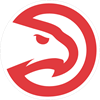Trey Burke, Michigan, PG
Burke is probably the favorite for National Player of the Year and has dazzled so far in the tournament, leading the 4-seed Michigan Wolverines to the Final Four for the first time since 1993. He has averaged 18.7 points and 8.0 assists in his past three NCAA Tournament games and single-handedly led a 14-point comeback against 1-seed Kansas in the Sweet 16. He's undersized (listed at only 6 feet), but in a draft class as weak as this year's, he has a real shot at comfortably jumping into the top 10 because of his efficiency and basketball smarts.
Michael Carter-Williams, Syracuse, PG
Carter-Williams has taken his game to a new level in the NCAA Tournament. The lanky, 6-foot-6 point guard almost looks like a young Shaun Livingston: both are great passers and both need serious work on their jumpers. Carter-Williams could improve his efficiency immensely, but his 7.4 assists per game are good enough for third in the nation. The Syracuse offense goes as he goes. When he's on, it can really score. When he's off, the offense looks completely discombobulated. He looks best when he's getting steals (which he does often, averaging 2.8 per game) and getting out in transition to run fast breaks.
Gorgui Dieng, Louisville, C
Dieng is the top-rated prospect on the Louisville roster. Mainly he's out there for his defense. He's a dominant shot blocker and has averaged 3.2 and 2.5 swats per game over the past two seasons, respectively.
Trey Burke, Michigan, PG
Burke is probably the favorite for National Player of the Year and has dazzled so far in the tournament, leading the 4-seed Michigan Wolverines to the Final Four for the first time since 1993. He has averaged 18.7 points and 8.0 assists in his past three NCAA Tournament games and single-handedly led a 14-point comeback against 1-seed Kansas in the Sweet 16. He's undersized (listed at only 6 feet), but in a draft class as weak as this year's, he has a real shot at comfortably jumping into the top 10 because of his efficiency and basketball smarts.
Michael Carter-Williams, Syracuse, PG
Carter-Williams has taken his game to a new level in the NCAA Tournament. The lanky, 6-foot-6 point guard almost looks like a young Shaun Livingston: both are great passers and both need serious work on their jumpers. Carter-Williams could improve his efficiency immensely, but his 7.4 assists per game are good enough for third in the nation. The Syracuse offense goes as he goes. When he's on, it can really score. When he's off, the offense looks completely discombobulated. He looks best when he's getting steals (which he does often, averaging 2.8 per game) and getting out in transition to run fast breaks.
Gorgui Dieng, Louisville, C
Dieng is the top-rated prospect on the Louisville roster. Mainly he's out there for his defense. He's a dominant shot blocker and has averaged 3.2 and 2.5 swats per game over the past two seasons, respectively. He jumps well, is a pretty good athlete, tends to find the right spots, and anchors arguably the best defense in the entire country. He's also improved his offensive game enough that, while it's nowhere close to elite, it's passable. He's developed a decent mid-range jumper over the past year and a half to complement an inside game, which used to be his only weapon on that end of the floor.
Tim Hardaway, Jr., Michigan, SG
Hardaway may not enter this year's draft. There's a possibility that the junior stays for one final season at Michigan before making the leap to the NBA. If he does leave, though, he probably falls somewhere in the fringe first-round pick category. He might go at the end of the first round; he might go at the beginning of the second round. Either way, whoever takes him will be getting an athletic guard with legitimate NBA size (6-foot-6, 205 pounds) who can shoot and whose efficiency has taken a massive leap in his third collegiate season. He went from 41.8-28.3-71.5 shooting splits as a sophomore to 44.5-38.7-69.5 splits as a junior.
Glenn Robinson III, Michigan, SF
Like Hardaway, Robinson is a Michigan kid whose father and namesake was an NBA star in the 1990s. But unlike Hardaway, Robinson's game is highly focused on his athleticism. While Hardaway can move well, it's Robinson's leaping ability that sets him apart. He's fast, he's big, he's strong, and he runs the floor with Trey Burke quite well. And because Robinson is only a freshman, his 6-foot-6, 210-pound frame is thought to have a higher ceiling than Hardaway's. He's been highly efficient this year, shooting 56.6 percent from the field. Much of that has to do with his all-world point guard getting him consistent, good looks, but it's also a testament to his shot selection, a part of the game with which plenty of freshman often struggle.
James Southerland, Syracuse, F
Southerland hasn't gotten a lot of draft talk this year, but he has a shot at making an NBA roster if only for his shooting. NBA teams are always looking for someone with range and it seems like Southerland's goes out to the half-court line. There have been times when he has spotted up from as far out as 30 feet and it's posed no issue. He's still comfortably draining threes. A couple of weeks ago, he broke the record for most threes in the Big East Tournament, hitting 19 in Syracuse's four games. The 6-foot-8 Southerland has a high release on his shot and when he's going, it's very tough to block it or even effect what he's trying to do. If an NBA team wants an under-the-radar shooter, it's possible this is its guy.
Russ Smith, Louisville, G
Here's the problem: Smith is small. We're talking super small. So far he's been the best player in the NCAA Tournament, leading what is arguably the country's best defense and averaging 26.0 points over four games in the process. At the collegiate level, he gets to the rim like crazy and knocks down threes consistently. That's the mold of a player that you'd think could translate well to the NBA, but if you're a 6-foot-1 shooting guard that doesn't often pass the rock, there are going to be questions about your ability to finish around the basket.
C.J. Fair, Syracuse, F
Fair has always been a solid mid-range jump shooter, but this year, he took his game to new levels. His range can now consistently go out to 22 feet or so and recently, he's vowed to start taking more threes. He is shooting 47.5 percent from long range on 1.6 attempts per game - not bad for your starting power forward. The relatively slim Fair may project to be more of a small forward at the next level, though, and his defense is always a worry coming out of that Syracuse zone, which is so effective against college kids but that has never really produced a good NBA defender.






































